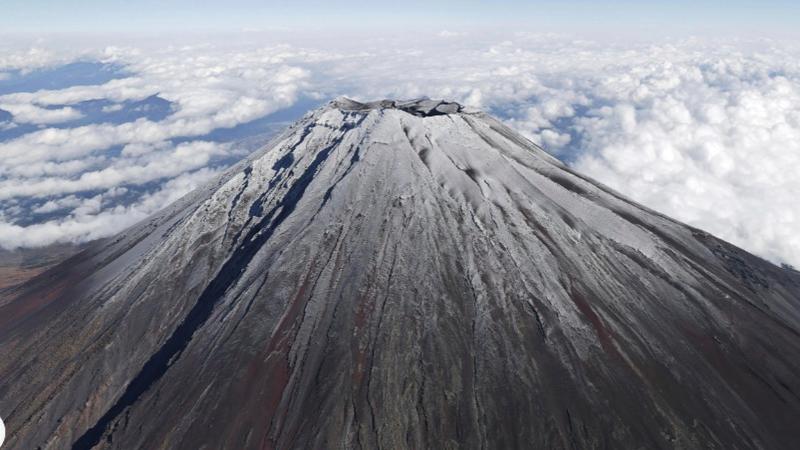Published 18:32 IST, November 13th 2024
Late Snow On Japan's Mount Fuji Breaks 130 Years Record, Stunning Visuals Emerge
Mount Fuji in Japan's Shizuoka received its snowcap on Wednesday, over a month late, setting a 130-year record for the most-delayed snowfall.

Tokyo: Mount Fuji in Japan's Shizouka received its iconic snowcap early Wednesday, over a month later than usual, setting a 130-year record for the most-delayed snowfall.
According to the Shizuoka branch of the Japan Meteorological Agency, the first snowfall on Mt. Fuji, a UNESCO World Heritage site, was visible from the mountain's southwestern side.
Meteorological officials said the absence of snow on Mt. Fuji on Tuesday broke the previous record set on October 26, 2016.
Usually, Mt. Fuji starts to see snow on its summit around October 2, about a month after the hiking season ends. Last year, snow fell on October 5, according to the JMA.
Snowless Mt. Fuji has sparked attention on social media, with people sharing photos of the bare mountain. Some expressed surprise, while others raised concerns about climate change.
A photo of Mt. Fuji was shared on X by a user, photo captured from flight shows there is no show on the summit.
The JMA's Kofu office attributed the lack of snow on Mt. Fuji to October's unexpectedly warm weather. Temperatures this year have been higher across Japan, including at Mt. Fuji.
“Many people are waiting to see the snowcap and we’ve received many inquiries recently,” Kiryu said. He added that clouds around the mountaintop have blocked the view since Wednesday morning, delaying the confirmation of the snowcap, but officials are continuing to try to get a peak at the first snowfall.
Kiryu said it is too early to attribute this year’s late snowcap to global warming, pointing out that Mt. Fuji's first snow last year also fell in early October. He added, “I think we need to examine data for a longer period of time to make any conclusion.”
A symbol of Japan, Mt. Fuji, or "Fujisan," was once a site of pilgrimage. Its snow-capped peak and nearly symmetrical slopes have inspired countless works of art, including Katsushika Hokusai’s famous Thirty-six Views of Mount Fuji.

Some Facts about Mt. Fuji
Mount Fuji is Japan's highest peak, stands at 12,388 feet (3,776 meters) on the Pacific Ocean coast, straddling the Yamanashi and Shizuoka prefectures in central Honshu, about 60 miles (100 km) west of the Tokyo-Yokohama area.
It has been dormant since its last eruption in 1707, it is still considered an active volcano by geologists.
A symbol of Japan, Mt. Fuji, or "Fujisan," was once a site of pilgrimage. Its snow-capped peak and nearly symmetrical slopes have inspired countless works of art, including Katsushika Hokusai’s famous *Thirty-six Views of Mount Fuji*.

Today, Mt. Fuji attracts hikers who climb to the summit to watch the sunrise. However, concerns over environmental impact have grown due to the litter left behind and overcrowding, prompting calls for better environmental protection and measures to manage overtourism.
Jun Kubota, a weather forecaster and climber from Yamanashi, one of the two prefectures that Mt. Fuji straddles, expressed concern that this year’s delayed snowfall could be part of a broader trend.
“I wonder if the season we can enjoy the snow is getting shorter, not just at Mt. Fuji but also on other mountains in central Japan or on Hokkaido,” Kubota said in a Zoom call.
He highlighted reports of snow shortage on ski slopes in recent years. “I’m afraid there could be an impact not only on snow mountain climbing, but also winter sports in general.”
Updated 18:33 IST, November 13th 2024




